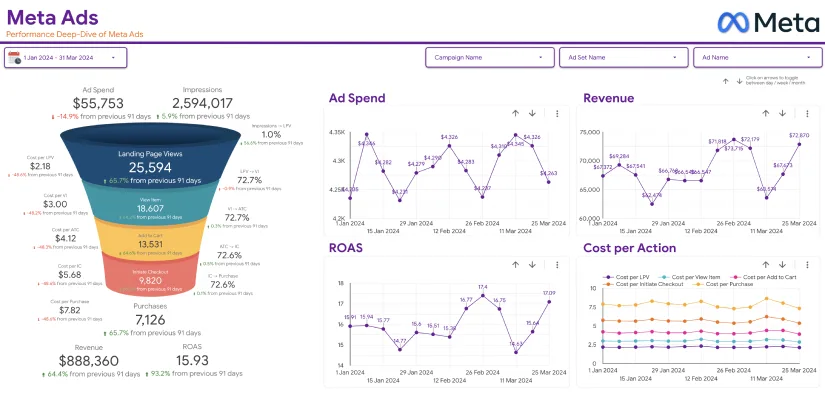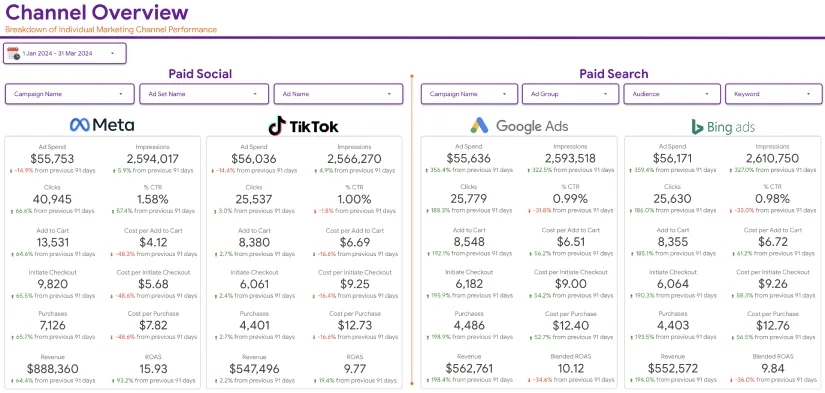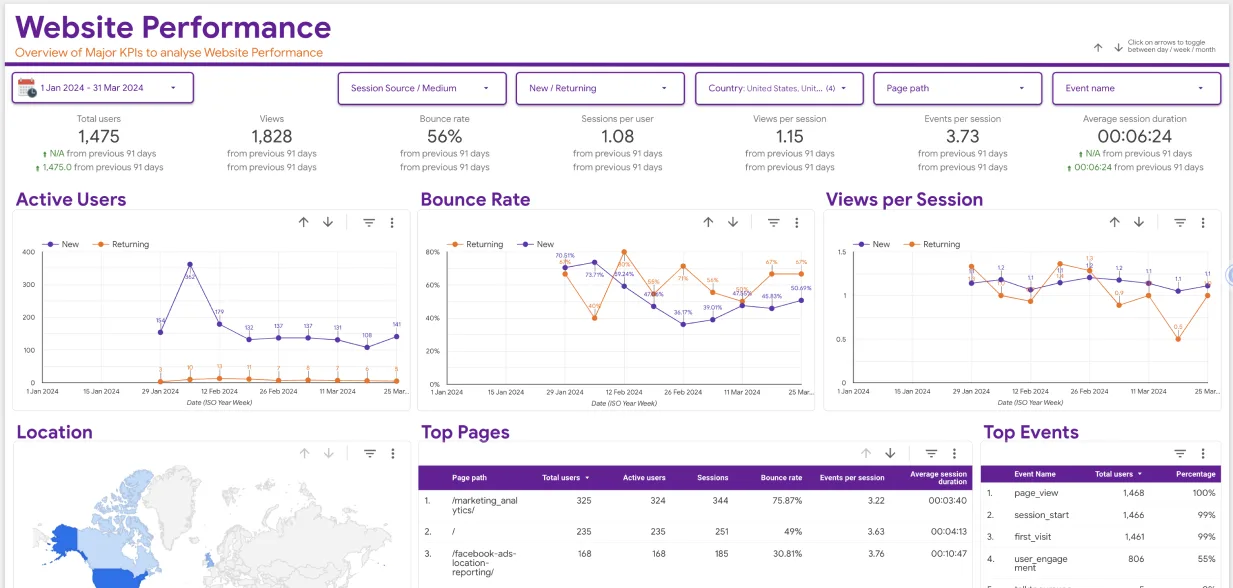In today’s fast-paced digital landscape, businesses need actionable insights to remain competitive. Automated SEO reports have become essential for tracking website performance, but not all reports are created equal. While automation can save time, the real value lies in customizing these reports to reflect your goals. Whether you are an e-commerce business, a B2B service provider, or a content-driven platform, tailored SEO reports allow you to focus on the metrics that drive your success.
In this guide, we’ll explore what automated SEO reports are, why customization is crucial, and which key performance indicators (KPIs) you should prioritize based on your business objectives. Let’s dive into how businesses can harness the power of custom SEO reports to achieve sustainable growth.
What Are Automated SEO Reports?

Before we delve into customization, it’s important to clarify what automated SEO reports are. These reports are generated automatically using SEO tools that aggregate data from various analytics platforms such as Google Analytics, Search Console, and third-party SEO tools like SEMrush, Moz, or Ahrefs. Instead of manually pulling data, automated SEO reports streamline the process, providing real-time or scheduled insights on your website’s performance.
With automation, you get a clear view of your SEO health, including metrics like organic traffic, keyword rankings, backlinks, page load speed, and user engagement. However, without customization, these reports can be overwhelming and may include irrelevant data that doesn’t directly impact your bottom line. This is why personalization is critical for extracting actionable insights.
Why Customization is Key to Effective SEO Reporting
While automation is a game-changer in efficiency, not every metric matters to every business, customizing automated SEO reports helps you focus on what’s most important to your unique goals. Here’s why:
- Relevance: Customization ensures that the metrics in your report are directly aligned with your business goals. This prevents “data overload” and helps decision-makers focus on the most actionable information.
- Time-saving: Rather than sifting through dozens of metrics that don’t contribute to your objectives, customized reports highlight the KPIs that drive growth, saving time and improving clarity.
- Strategic insights: Tailored reports allow you to focus on long-term strategies rather than short-term fluctuations. This enables better decision-making based on the overall SEO trajectory.
- Better communication: If you manage SEO for clients, customized reports ensure that they see only metrics that matter to them. Focusing on value-driven insights can improve transparency and client satisfaction.
How to Customize Automated SEO Reports
Now that we’ve established the importance of customization let’s explore the steps involved in tailoring your automated SEO reports:
- Define Your Business Goals
The first step is understanding your business goals. Are you trying to increase organic traffic, improve conversion rates, or rank higher for specific keywords? You can select the metrics that best reflect progress toward these goals by identifying your primary objectives.
For example, an e-commerce website may focus more on metrics related to traffic, conversions, and product page rankings. On the other hand, a B2B service provider might be more interested in lead generation, organic traffic from specific regions, and brand authority. - Choose the Right Metrics (KPIs)
Once you have clear goals, you can choose the key performance indicators (KPIs) that matter most. Let’s break down some of the most important KPIs based on different business objectives:
Key Metrics That Matter for Your Automated SEO Reports
1. Organic Traffic

Why It Matters: Organic traffic is a foundational SEO metric that measures how many visitors are landing on your site through non-paid search results. This metric is essential for businesses that rely heavily on inbound traffic, whether e-commerce platforms or content-driven websites.
How to Customize: When generating automated SEO reports, you can break down organic traffic by:
- Pages: Which landing pages are driving the most organic traffic?
- Geography: Are you targeting specific regions? Track how organic traffic varies by location.
- Devices: Is the majority of your traffic coming from mobile or desktop?
Tools like Google Analytics and Google Search Console allow you to view these traffic sources in detail, helping you see where your website is gaining or losing traction.
2. Keyword Rankings
Why It Matters: Tracking keyword rankings helps you understand how well your website performs for target search terms. This metric is a top priority for businesses aiming to rank for competitive keywords.
How to Customize: Automated SEO reports can show:
- Ranking Progress: Which keywords increase or decrease in SERPs (Search Engine Results Pages)?
- Keyword Segmentation: Track rankings for different keywords—branded vs. non-branded, product-related vs. informational.
- Competitor Comparison: Many SEO tools allow you to see how your rankings compare to your competitors for the same keywords.
For businesses like Eaglytics, ensuring you’re ranking well for high-intent keywords can drastically improve lead generation and overall visibility.
3. Backlink Profile

Why It Matters: Backlinks remain one of the strongest ranking factors in SEO. A high-quality backlink profile can significantly improve your domain authority, boosting rankings.
How to Customize: Instead of overwhelming yourself with all backlink data, customize your automated reports to focus on:
- Quality Over Quantity: Track only backlinks from high-authority websites.
- New vs. Lost Links: Monitor how many new backlinks you’ve earned versus those that may have been lost.
- Anchor Text: Analyze the anchor text used in backlinks to ensure it aligns with your targeted keywords.
4. Conversion Rate from Organic Traffic
Why It Matters: Driving traffic is only part of the equation for most businesses. The true measure of success is converting that traffic into leads, sales, or other desired actions.
How to Customize: Automated SEO reports should not just track traffic but also analyze:
- Conversion Rate by Page: Identify which pages convert well and which need optimization.
- User Journey: Track the user’s path from landing page to conversion and identify any drop-off points.
- Conversion Rate by Device: If your mobile traffic is high but conversions are low, it might indicate issues with your mobile experience.
5. Bounce Rate and Dwell Time
Why It Matters: Bounce rate measures the percentage of visitors who leave your site after viewing only one page, while dwell time indicates how long users stay on it. High bounce rates and low dwell times can signal poor user experience or irrelevant content.
How to Customize: Tailor this section of your automated SEO report to show:
- Bounce Rate by Page: Which pages have the highest bounce rates? These may need further optimization.
- Dwell Time for Target Keywords: Analyze whether pages optimized for your primary keywords keep users engaged.
- Bounce Rate by Source: Where are the bounces coming from? Organic, direct, or referral traffic?
On the other hand, data warehouses can only serve a handful of users at the same time since they handle much more complex queries. They’re built for data scientists, analysts, and C-level executives looking for a panoramic view of the business. Business intelligence tools source their data from data warehouses and, therefore, are crucial for high-level analysis and reporting.
6. Page Load Speed
Why It Matters: Google has confirmed that site speed is a ranking factor, and slow websites can cause visitors to leave before they even engage with your content. Page speed directly affects user experience and organic rankings.
How to Customize: In automated reports, customize to view:
- Speed by Page: Analyze load times for key landing pages and high-traffic pages.
- Device Comparison: See if page load speed differs for desktop and mobile users.
- Opportunities for Improvement: Many SEO tools suggest specific actions to reduce page load time, such as optimizing images or leveraging browser caching.
7. Local SEO Performance (for Location-Based Businesses)
Why It Matters: If you’re running a local business, your automated SEO reports should focus on metrics related to local search performance, such as Google My Business rankings, local keyword performance, and customer reviews.
How to Customize: Focus on:
- Local Keyword Rankings: Track keywords that include geographic terms.
- Google My Business Insights: Measure clicks, calls, and direction requests.
- Local Backlinks: Are you earning links from other local businesses or directories?
8. Core Web Vitals
Why It Matters: Core Web Vitals are a set of user-centric performance metrics introduced by Google that impact your site’s rankings. These include:
- Largest Contentful Paint (LCP): How long does it take for the largest element on your page to load?
- First Input Delay (FID): How quickly your site becomes interactive.
- Cumulative Layout Shift (CLS): Measures visual stability and whether elements on the page shift unexpectedly.
How to Customize: Track Core Web Vitals on critical landing pages in automated reports and prioritize underperforming ones.
Final Thoughts: Optimizing Your Automated SEO Reports for Success
In a world of abundant data, customized automated SEO reports help you cut through the noise and focus on the metrics that truly matter. Tailoring these reports to your specific goals ensures that you always work with actionable insights, whether you want to increase traffic, improve keyword rankings, or boost conversions.
By leveraging tools like Google Analytics, SEMrush, or Ahrefs and customizing them to their needs, businesses like Eaglytics can better manage their SEO efforts and ensure that relevant data back each decision.
Remember, the real power of automated SEO reports lies not in the automation itself but in how you use the insights to optimize your strategy for long-term success.






